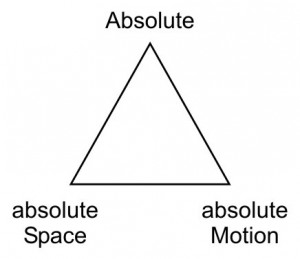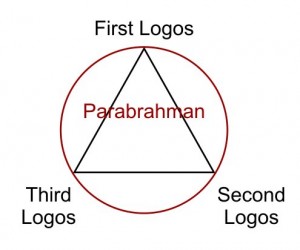The Book of Dzyan, Stanza 7, verse 4, begins:
“It is the root that never dies; the three-tongued flame of the four wicks . . .”
In the commentary on this (The Secret Doctrine, vol. 1, p. 237), Blavatsky appears to quote a parallel passage from the Egyptian Book of the Dead:
“‘I am the three-wicked Flame and my wicks are immortal,’ says the defunct. ‘I enter into the domain of Sekhem (the God whose arm sows the seed of action produced by the disembodied soul) and I enter the region of the Flames who have destroyed their adversaries,’ i.e., got rid of the sin-creating ‘four wicks.’ (See chap. i., vii., ‘Book of the Dead,’ and the ‘Mysteries of Ro-stan.’)”
If the defunct really says “I am the three-wicked Flame and my wicks are immortal” in the Egyptian Book of the Dead, this would be a parallel passage of much significance. So, years ago the late Jeanine Miller contacted me to see if I could find this in the improved translations published since Blavatsky’s time. Blavatsky used the 1882 French translation by Paul Pierret, Le Livre des morts des anciens Égyptiens, for her references to the Egyptian Book of the Dead. In Pierret’s translation, Blavatsky’s reference to chapter i, line vii, is in the midst of a sentence. I here quote the whole sentence (p. 5):
“Je suis avec Horus ce jour d’envelopper Teshtesh, d’ouvrir la porte au vengeur de l’immobile de coeur
l. 7. et de rendre mystérieux les mystères de Ro-stau. Je suis avec Horus dans l’acte de pétrir ce bras gauche de l’Osiris qui est à Sekhem; je sors et j’entre dans la demeure des flammes, détruisant les adversaires,
l. 8. autrement dit les rebelles dans Sekhem.”
Pierret’s French translation was translated into English by Charles H. S. Davis, and published in 1895, titled The Egyptian Book of the Dead. That sentence was rendered into English as (p. 69):
“I am with Horus on this day for covering Teshtesh, for opening the door to the avenger of the god with a motionless heart
7. and for making mysterious the mysteries in Restau. I am with Horus in the act of supporting this left arm of the Osiris who is in Sechem; I go out and enter the blazing-abode, exterminating the opponents,
8. in other words, the rebels in Sechem.”
As may be seen, this is indeed what Blavatsky referred to in her commentary on this stanza from the Book of Dzyan; but the phrase “I am the three-wicked Flame and my wicks are immortal” is not there in either Pierret’s French translation or in its translation into English by Davis. The only reference to flame there is “blazing-abode,” “demeure des flammes.”
Notice that Ro-stau in Pierret’s “mystères de Ro-stau,” Restau in Davis’s “mysteries in Restau,” is Ro-stan in Blavatsky’s “Mysteries of Ro-stan.” This is obviously nothing more than a typographical error in The Secret Doctrine, reading the “u” in Blavatsky’s handwritten Ro-stau as “n.” This was then repeated in The Theosophical Glossary, but without the hyphen: “Rostan. Book of the Mysteries of Rostan; an occult work in manuscript.” As we shall see, other Egyptologists use other variant spellings of this word. More importantly, the “occult work in manuscript” referred to must be the source of the phrase, “I am the three-wicked Flame and my wicks are immortal,” and the source of Blavatsky’s interpretation of it. Contrary to Jeanine Miller’s hopes, the improved translations published since Blavatsky’s time do not have this phrase.
Since Pierret’s 1882 French translation used by Blavatsky, the Egyptian Book of the Dead has been translated a few more times. The most famous of these translations is by E. A. Wallis Budge, published in 1895, with a revised translation in 1913. Despite the popularity of the Budge translations up to the present, Egyptian language studies have progressed much since then, and these have been superseded by what are regarded as the more accurate translations made by Raymond O. Faulkner (1972), and by Thomas George Allen (1974), independently of each other. As is well-known, there is no single Egyptian Book of the Dead, but rather a number of somewhat differing collections of “spells.” There are nearly 200 of these spells. A numbering system for them was introduced by Karl Richard Lepsius in the mid-1800s, and it is still in use by Egyptologists. So it is easily possible to locate the same spell in the different published translations of the various versions.
In the 1972 translation by Raymond O. Faulkner, as reprinted in The Ancient Egyptian Book of the Dead (University of Texas Press, Austin, Published in Cooperation with British Museum Press, 1985), this passage (with fuller surrounding sentences) is translated as (p. 35):
“Thoth has helped me so that I might be with Horus on the day of the clothing of the Dismembered One and of the opening of the caverns for the washing of the Inert One and the throwing open of the door of the secret things in Rosetjau; so that I might be with Horus as the protector of the left arm of Osiris who is in Letopolis. I go in and out among those who are there on the day of crushing the rebels in Letopolis so that I may be with Horus on the day of the Festival of Osiris; . . .”
In this translation there is no mention of flame. Instead it has “among those who are there.”
In the 1974 translation by Thomas George Allen, The Book of the Dead, or Going Forth by Day (The Oriental Institute of the University of Chicago, University of Chicago Press), this passage (with fuller surrounding sentences) is translated as (p. 5):
“I was with Horus on the day of wrapping the Dismembered One and opening the pits, of washing the weary-hearted one and secreting the entrance to the secrets of Rosetau. I was with Horus as savior of that left shoulder of Osiris that was in (Letopolis), going into and out of the devouring flame on the day of expelling the rebels from (Letopolis).”
As in Pierret’s translation used by Blavatsky, there is a reference to flame, but nothing about “I am the three-wicked Flame and my wicks are immortal.”
To be more complete, in the 1895 translation by E. A. Wallis Budge, The Book of the Dead: The Papyrus of Ani in the British Museum. The Egyptian Text with Interlinear Transliteration and Translation, a Running Translation, Introduction, Etc., this passage (with fuller surrounding sentences) is translated as (pp. 271-272):
“I am with Horus on the day of the clothing of Teshtesh and of the opening of the storehouses of water for the purification of the god whose heart moveth not, and of the unbolting of the door of concealed things in Re-stau. I am with Horus who guardeth the left shoulder of Osiris in Sekhem, and I go into and come out from the divine flames on the day of the destruction of the fiends in Sekhem.”
Budge here adds a footnote on Re-stau: “I.e., ‘the door of the passages of the tomb.’”
In the 1913 revised translation by E. A. Wallis Budge, The Book of the Dead: The Hieroglyphic Transcript of the Papyrus of ANI, the Translation into English and An Introduction, this passage (with fuller surrounding sentences) is translated as (p. 358):
“I am with Horus on the day of dressing Teshtesh. I open the hidden water-springs for the ablutions of Urt-ab. I unbolt the door of the Shetait Shrine in Ra-stau. I am with Horus as the protector (or defender) of the left shoulder of Osiris, the dweller in Sekhem. I enter in among and I come forth from the Flame-gods on the day of the destruction of the Sebhau fiends in Sekhem.”
Budge here adds a footnote on Ra-stau: “Ra-stau is the name given to the entrance to the corridors which led down to the Kingdom of Seker at or quite near to the modern region of Sakkarah.”
The Budge translations refer to “the divine flames,” or “the Flame-gods,” but again, nothing like the phrase “I am the three-wicked Flame and my wicks are immortal.”
The first ever English translation of the Egyptian Book of the Dead was made by Samuel Birch, and was included in the 1867 book, Egypt’s Place in Universal History, volume 5. This translation was not used by Blavatsky. In it, this passage (with fuller surrounding sentences) is translated as (p. 162):
“I am with Horus the day of clothing Tesh-tesh [the Nile], to open the door to wash the heart of the meek one, keeping secret the secret places in Rusta. I am with Horus supporting the right shoulder of Osiris in Skhem. I come and go from the Realms of Fire [the Phlegethon]. I expel the wicked [or the opposers] from Skhem.”
None of these translations of the Egyptian Book of the Dead have anything like the phrase, “I am the three-wicked Flame and my wicks are immortal.” Nor do they suggest anything like Blavatsky’s interpretation of this phrase. We must therefore assume that this phrase, and this interpretation, come from the “Book of the Mysteries of Rostan [i.e., Rostau]; an occult work in manuscript.”
Category: Book of Dzyan, Cosmogenesis, Parabrahman | 4 comments

